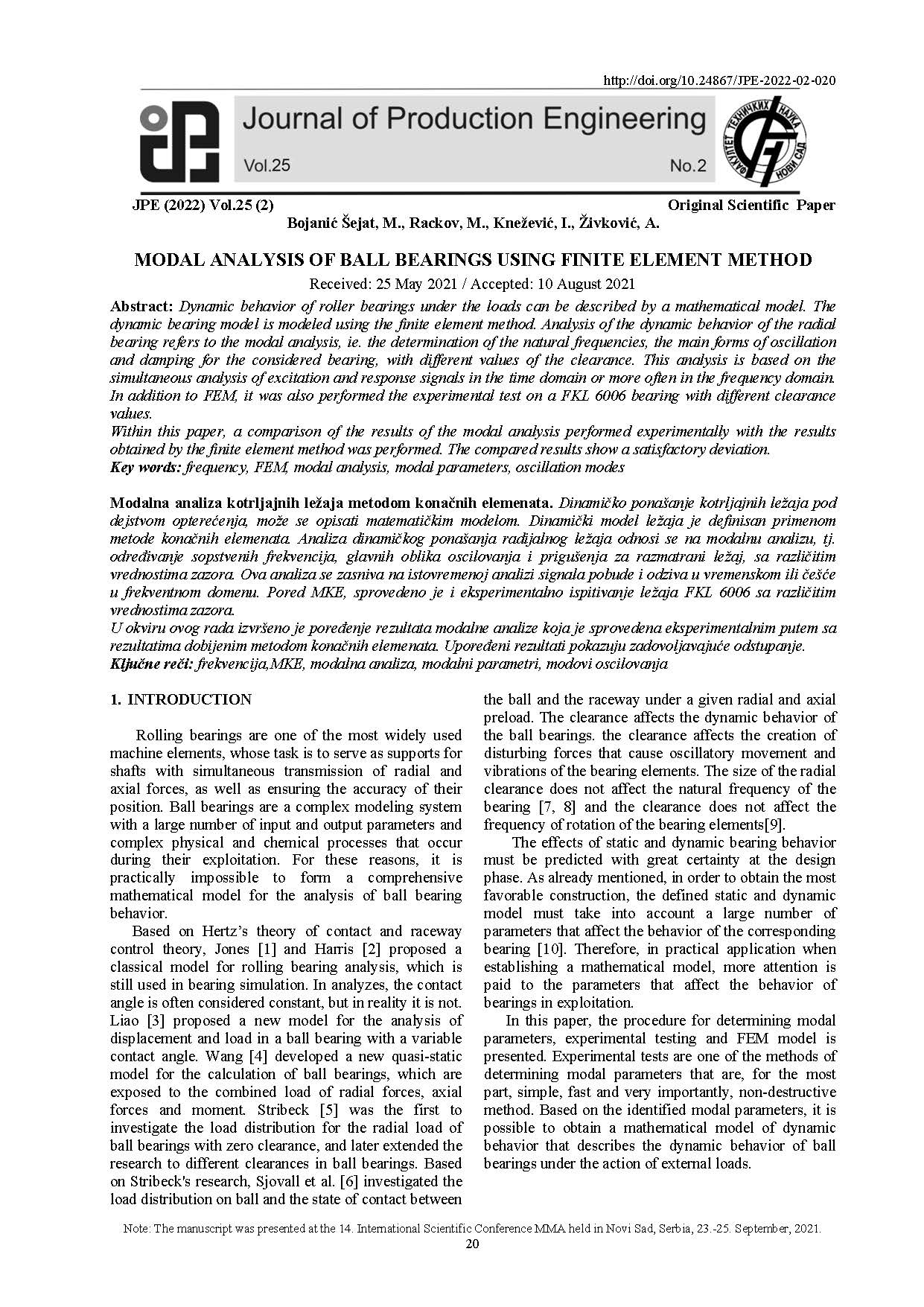
Published 2022-12-01
abstract views: 283 // FULL TEXT ARTICLE (PDF): 337
Keywords
- frequency,
- FEM,
- modal analysis,
- modal parameters,
- oscillation modes
How to Cite
Copyright (c) 2023 Journal of Production Engineering

This work is licensed under a Creative Commons Attribution 4.0 International License.
Abstract
Dynamic behavior of roller bearings under the loads can be described by a mathematical model. The dynamic bearing model is modeled using the finite element method. Analysis of the dynamic behavior of the radial bearing refers to the modal analysis, ie. the determination of the natural frequencies, the main forms of oscillation and damping for the considered bearing, with different values of the clearance. This analysis is based on the simultaneous analysis of excitation and response signals in the time domain or more often in the frequency domain. In addition to FEM, it was also performed the experimental test on a FKL 6006 bearing with different clearance values. Within this paper, a comparison of the results of the modal analysis performed experimentally with the results obtained by the finite element method was performed. The compared results show a satisfactory deviation.

